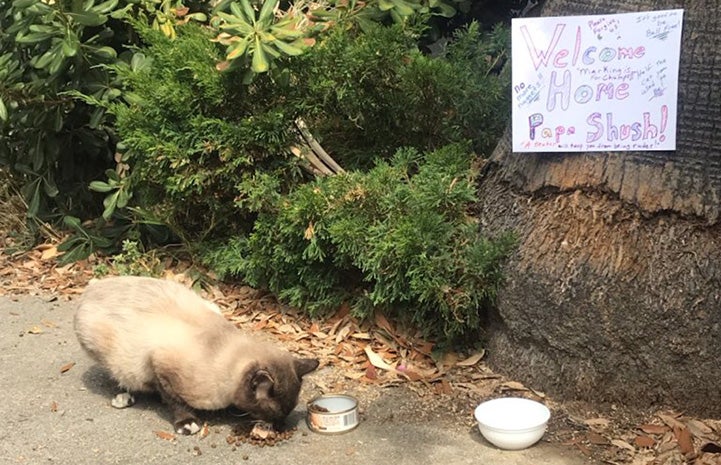In 2020, lifesaving went to the cats

Between internet videos, cat cafés and influencers like Nala, the incredible popularity of cats in American culture has really been on display. However, felines don’t always fare so well in our shelter systems.
Based on our most recent data, even though fewer cats than dogs enter shelters across the nation, more than twice as many cats are killed. With this knowledge, it became abundantly clear that we needed to do more for cats, and that focusing on cat lifesaving programs would be essential to achieving no-kill nationwide by 2025. And the good news is that’s exactly what we’re doing.
In fact, shelters that are working with Best Friends’ program teams are seeing their lifesaving rates improve three times faster than those that aren’t working with us. That in itself is incredible. But shelters working with Best Friends on cat-specific lifesaving programs are reducing the number of cats killed in their shelters at 12 times the rate of other shelters.
Let me say that again for the folks in the back row: 12. Times. Faster. And, for the most part, we’re doing it by simply treating community cats the same way we treat indoor or owned cats.
For example, when a cat comes into a shelter and has a microchip, the shelter staff look up the cat’s owner, call that person, and return the cat to his home. Simple. And now we’re doing the same thing with community cats. Rather than keep them in a completely foreign environment and hope that someone wants to adopt a cat who probably doesn’t want to be adopted, we spay or neuter them, vaccinate them against infectious diseases, and return them to their homes, which are the communities where they were found. It’s a process called trap-neuter-return (TNR).
Community cats aren’t really homeless; their home just happens to be outside, in the community. That’s the place where they feel comfortable. They know where to find food and water, they know the other cats in the area, and they often have human caregivers looking out for them.
One such cat, by the name of Papa Shush, is so beloved in his community that there was a “Welcome home” sign awaiting him when he was returned to his neighborhood. The sign was put there by a local community cat caregiver named Lacey, who assisted us with TNR of every cat she cares for. It’s clear that Lacey, like so many other community cat caregivers, doesn’t just provide the basic necessities for the cats. She and so many members of the community truly love them.

That’s why, when we combine the love that people have for these cats and the incredible effectiveness of our community cat programs, we’re seeing such tremendous strides in cat lifesaving. Just last year, our national embed team, working across the nation, produced some incredible results.
In California, our partnership with Stanislaus Animal Services helped the shelter increase its cat save rate from 73.3% in 2019 to 89.2% in 2020 — a reduction of more than 1,200 cats killed. On top of that, it gave Stanislaus Animal Services an overall save rate of 91.8%, making the shelter no-kill.
Similarly, in the second year of our program with Riverside County Animal Services, the overall save rate jumped from 66.6% (2019) to 83.2% (2020), and the biggest change was in cat lifesaving, which jumped from a save rate of 48.1% to 78.1%. More than 7,800 fewer pets (7,200 of whom were cats) lost their lives in 2020 compared to 2019.
In New Mexico, Best Friends has been working with several shelters to help drive cat lifesaving success. In 2020, with amazing support from the Carroll Petrie Foundation, Best Friends partnered with Alamogordo Animal Shelter, Animal Services Center of the Mesilla Valley, Farmington Animal Shelter, Roswell Animal Services, Aztec Animal Services and Espanola Valley Humane Society. Combined, these organizations reduced the number of animals killed in New Mexico by more than 2,700 animals, 1,600 of whom were cats. They closed the gap to no-kill by approximately 25% across the state in a single year.
Similar results have been seen in Pocatello, Idaho, where Pocatello Animal Services saw the cat save rate increase from 54.6% in 2019 to 73.5% in 2020, with an overall save rate of 80.5%. That meant an additional 325 animals made it out alive in 2020 versus 2019, and almost 300 of them were cats.
These amazing lifesaving numbers don’t lie. That’s why cat programming has become a growing and increasingly essential component of our work as we partner with shelters to help them achieve their lifesaving goals. But, like so many other aspects of our work, we can’t do it alone. Your local shelters need your help. The good news is that it’s easy to become involved. Check out our pet lifesaving dashboard to see what’s happening in your community and at your local shelter, and lend a helping hand. You won’t regret it, and neither will the animals.
Together, we can Save Them All.
